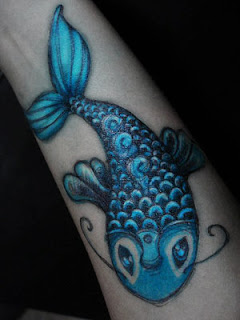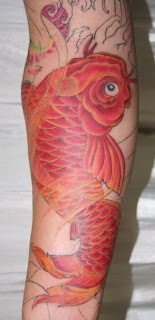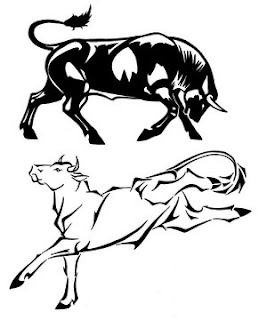Monday, May 31, 2010
Sunday, May 30, 2010
Saturday, May 29, 2010
Thursday, May 27, 2010
Wednesday, May 26, 2010
Tuesday, May 25, 2010
Monday, May 24, 2010
American Gang Tattoos
Mara gang member ‘Smoking,’ 25, prison portrait in Chimaltenango, Guatemala.
Photo AP / Rodrigo Abd
Throughout Central America and the U.S., the Mara 18 and Mara Salvatrucha gangs are known for their audacious tactics, including beheading their enemies and covering entire buildings and even their bodies with gang symbols.
Anti-gang operatives are saying these typically uneducated and aimless youth have begun recruiting high school and college students, and escalating their criminal activities from minor robberies to large-scale extortion, prostitution, car theft and kidnappings.
The gangs first formed in Los Angeles in the 1980’s, recruiting Salvadorans who fled to the U.S. to escape civil war. After many of the members were deported for crimes committed in the U.S. in the ’90’s, the gangs established themselves in Central America.
There are believed to be as many as 30,000 Maras in the U.S., mainly in Los Angeles, and about 100,000 in Guatemala, El Salvador, Honduras and Nicaragua, according to U.S. federal authorities.
Distinguishing themselves by tattoos head to toe with threatening symbols and hanging out in large crowds on street corners, their goal was to intimidate and terrify regular citizens and rival gangs alike.
But that has recently changed after El Salvador, Guatemala and Honduras adopted tough anti-gang policies, including graffiti-removal campaigns and harsh punishments for gang-related crimes. Many youths have been arrested or killed, allegedly in operations by police or citizen’s groups.
“These days we can’t even go out onto the street, where the police look at us and we end up dead.” said 25 year old Giovanni Estrada — aka ‘Little Crazy’ — an imprisoned gang member with a tattooed face. “That’s why we tell (new gang members) not to paint their faces.”
Mara gang member Jose Daniel Galindo — aka 22 ‘Criminal — prison portrait
in Chimaltenango, Guatemala. Photo AP / Rodrigo Abd
Sammy Rivera, a security adviser for the Narcotics Affairs Section of the U.S. Embassy in Guatemala, and Jose Luis Tovar, deputy police chief in El Salvador, both say the gangs’ increasingly lucrative pursuits have attracted high school and college students looking to make a buck, versus the dropouts and other gang members who mainly sought to satisfy their need to belong.
Sunday, May 23, 2010
Art Cool tattoos
The tattoo literally means to puncture the skin. The tattoos are applied to the body piercing the outer skin layer and the insertion of the colors in the dermal layer of the skin. You need to think as permanent tattoos, although with time some colors may fade.
There are many different ways you can get a tattoo, but old-fashioned or modern techniques used, the skin is punctured with a sharp tool. Originally, tattooing requires one or more needles fixed to a stick and dug into the skin of a tap. The Polynesians sound recording Tau Tau - is what led to its original name - tattoo. Today, tattooing is usually done with an electric needle or gun.
Since tattoos are permanent and there are risks associated with tattoos, it is important to choose knowingly and a tattoo artist and shop or salon. For several tattoo inks can cause allergic reactions or scarring, you should also discuss your decision to get tattooed with your dermatologist. Below you can see the essential tips to ensure a safe tattoo experience.
Sexy American Latin Tattoos
Saturday, May 22, 2010
Amazing Art of Arm Japanese Tattoo Ideas With Koi Fish Tattoo Designs With Image Arm Japanese Koi Fish Tattoo Gallery
 Amazing Art of Arm Japanese Tattoo Ideas With Koi Fish Tattoo Designs With Image Arm Japanese Koi Fish Tattoo Gallery 1
Amazing Art of Arm Japanese Tattoo Ideas With Koi Fish Tattoo Designs With Image Arm Japanese Koi Fish Tattoo Gallery 1 Amazing Art of Arm Japanese Tattoo Ideas With Koi Fish Tattoo Designs With Image Arm Japanese Koi Fish Tattoo Gallery 2
Amazing Art of Arm Japanese Tattoo Ideas With Koi Fish Tattoo Designs With Image Arm Japanese Koi Fish Tattoo Gallery 2 Amazing Art of Arm Japanese Tattoo Ideas With Koi Fish Tattoo Designs With Image Arm Japanese Koi Fish Tattoo Gallery 3
Amazing Art of Arm Japanese Tattoo Ideas With Koi Fish Tattoo Designs With Image Arm Japanese Koi Fish Tattoo Gallery 3 Amazing Art of Arm Japanese Tattoo Ideas With Koi Fish Tattoo Designs With Image Arm Japanese Koi Fish Tattoo Gallery 4
Amazing Art of Arm Japanese Tattoo Ideas With Koi Fish Tattoo Designs With Image Arm Japanese Koi Fish Tattoo Gallery 4 Amazing Art of Arm Japanese Tattoo Ideas With Koi Fish Tattoo Designs With Image Arm Japanese Koi Fish Tattoo Gallery 5
Amazing Art of Arm Japanese Tattoo Ideas With Koi Fish Tattoo Designs With Image Arm Japanese Koi Fish Tattoo Gallery 5 Amazing Art of Arm Japanese Tattoo Ideas With Koi Fish Tattoo Designs With Image Arm Japanese Koi Fish Tattoo Gallery 6
Amazing Art of Arm Japanese Tattoo Ideas With Koi Fish Tattoo Designs With Image Arm Japanese Koi Fish Tattoo Gallery 6 Amazing Art of Arm Japanese Tattoo Ideas With Koi Fish Tattoo Designs With Image Arm Japanese Koi Fish Tattoo Gallery 7
Amazing Art of Arm Japanese Tattoo Ideas With Koi Fish Tattoo Designs With Image Arm Japanese Koi Fish Tattoo Gallery 7Sexy Geri Halliwell Tattoos















